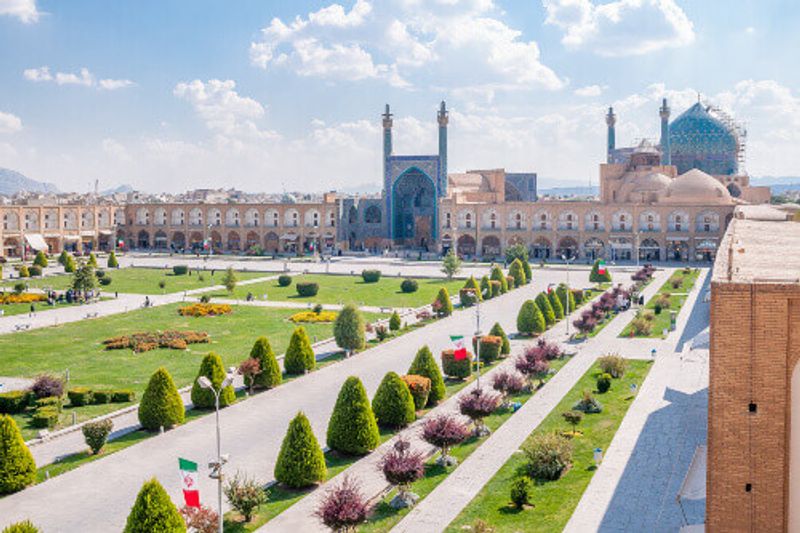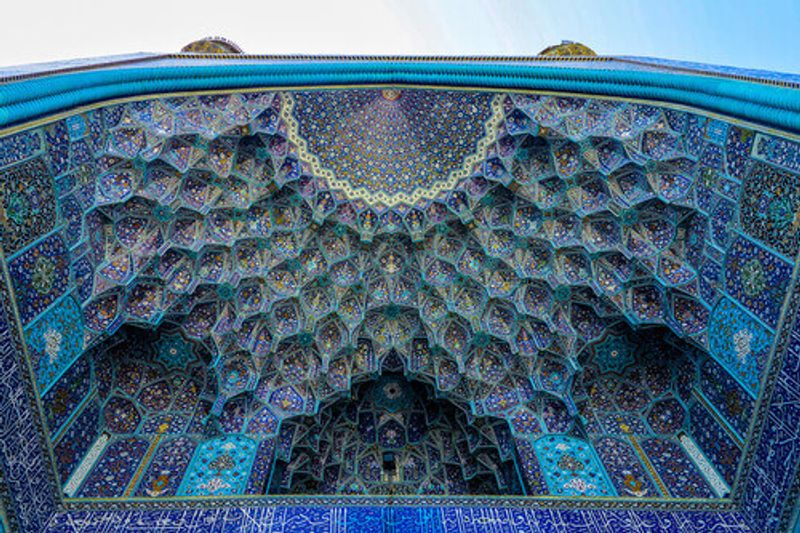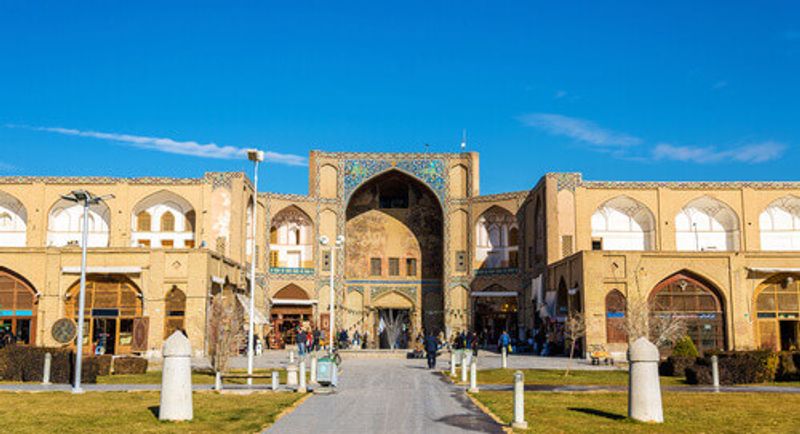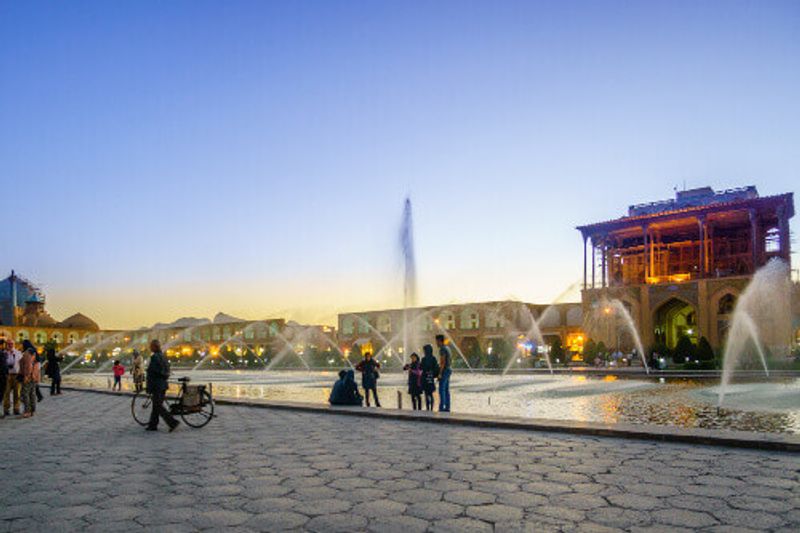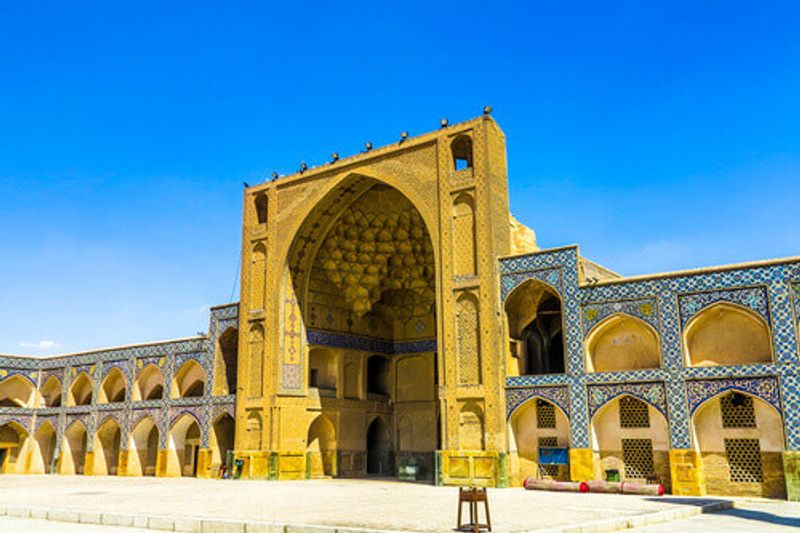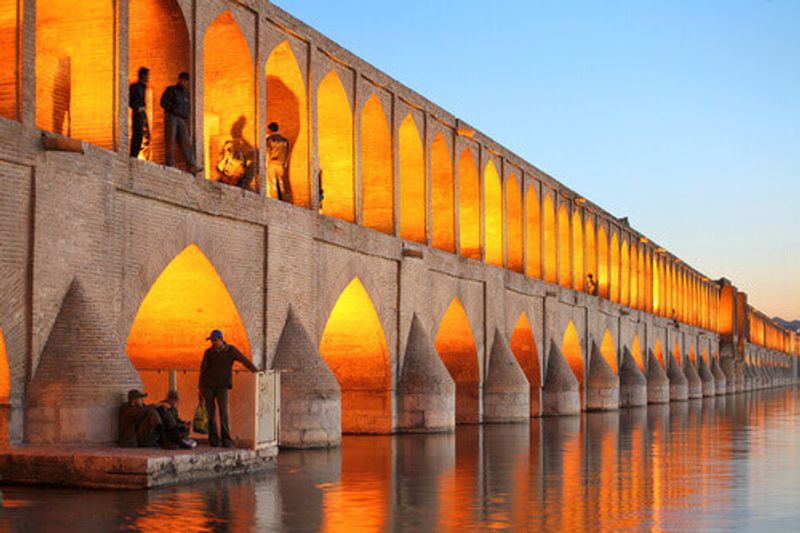Mosques, minarets, squares and bridges – Isfahan is a living museum with over a thousand years of Persian architecture on display
Once one of the largest cities in the world, Isfahan is a medieval city dating back to the 11th century and has been the capital of the Persian Empire twice in its history. It is regarded as a living museum of traditional Persian culture famous for its grand boulevards, historic bazaars, tiled mosques, covered bridges and ancient palaces.
One of the most stunning buildings in the city is the Masjed-e Shah. Completed over 400 years ago, the mosque remains unchanged since the crowning dome adorned it in 1629. Like many Iranian mosques it was created as a showpiece by the ruling emperors at the time – in this case by Shah Abbas I of the Safavid dynasty. The Masjed-e Shah is the centrepoint of Isfahan, sitting at the top of the city’s main square and with one entrance leading on to the Bazar-e Bozorg.
The oldest parts of the Bazar-e Bozorg, found right beside the mosque, are over a thousand years old. But much of what is visible today was built in the 1600s during the reign of Shah Abbas who was responsible for much of the city’s impressive architecture. The warren of narrow lanes are illuminated by rays of light that spill in through the domes above, bringing alive the coloured spices, fruits and silks that are on sale below. Like all Iranian bazaars teahouses selling sweet tea and restaurants serving biryani and kebabs are dotted between the stalls.
The covered market links together many of the city’s landmarks including Naqsh-e Jahan (Imam) Square. Another of Shah Abbas’ works, the Square dates back to 1602 and is made up of beautiful gardens and fountains. A UNESCO World Heritage Site, the square is one of the largest in the world and for centuries was where Persian princes would play polo. Little has changed since it was first built and the polo goal posts can still be found at the end of the square. Late afternoon, as the sun falls low behind the mountains, the blue-tiled minarets and domes light up and the fountains burst into life, attracting a large crowd of locals.
On the other side of the square is the Masjed-e Jameh a busy functioning mosque that showcases some of the best Persian architecture over the last 900 years. It is said a Zorastrian Temple was originally found on this site before the first Mosque was built here in the 11th century. The two large domes (north and south) have survived intact from this era but the rest of the mosque was destroyed by fire in the 12th century and rebuilt in 1121. Over the next 900 years, different kings added fountains, domes, pillars and minarets.
One of the most iconic images of Isfahan is the Khaju Bridge, built in 1650 by Shah Abbas II. The covered bridge has 24 arches and also serves as a sluice gate. The oldest bridge in the city however is the Shahrestran Bridge, which was first built during the Sasanian Empire between the 3rd and 7th century. There are a number of other impressive bridges including the Choobi Bridge, which was originally an aqueduct to supply the palace gardens on the north bank of the river.
